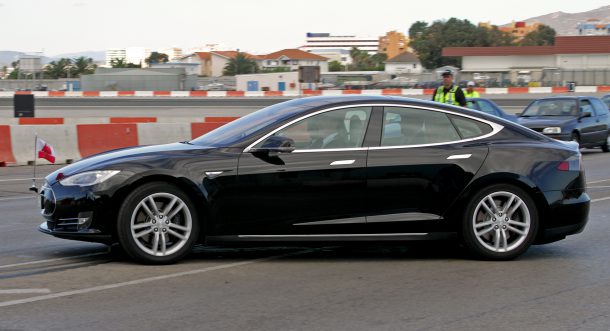#Sponsorship
QOTD: How Long Should a Street Car Be Able to Run on a Track? What If It's Electric?
I doubt that very many of you have seen Robb Holland’s series over on Jalopnik about turning a salvage-title Z06 into a Pikes Peak car. That’s okay; unless you’re a particular fan of Corvettes or of Robb Holland you aren’t missing much.
At the heart of it, the series is a fairly typical exercise in what I call “Journalist Stone Soup Motorsports” — you call everybody in the world to get as much free stuff as you can and then you offer to mention them on your website. Some people are much better at this than others; Mr. Holland’s vehicular opus looks like it consumed about a thousand man-hours of free labor and maybe fifty grand worth of free stuff. Feel free to compare that to the incompetent promotional efforts of your humble author, who won an AER race last month with uh, um… some year-old, half-worn tires courtesy of Dunlop. (Thank you, Dunlop!) This is no doubt due to the fact that Robb is a handsome, well-liked television personality, whereas I’m primarily notable for being kicked out of NASA Performance Touring twice in four seasons.
There is, however, something of value in Robb’s most recent article. In the process of excusing the Corvette Z06 from overheating shenanigans (hmm… why does this sound familiar?), he asks, “Personally, I think the whole [overheating] thing is load of crap… First, how long should a street car be able to run on track before having to stop? One minute, five minutes, 100 minutes? Twenty-four hours? What’s the benchmark? A race track is a very different environment than the street. You can’t design a car to work well in both.”
It’s easy to dismiss this by pointing out all the cars that can complete SCCA and NASA sprint races with bone-stock drivetrains, but if the question isn’t relevant now, it’s about to be extremely relevant. The electric car is coming, and it’s not going to handle racing terribly well. In fact, it’s not even going to handle hot weather or off-track high speeds terribly well. So what does it need to be able to do?
Oshawa Arena to Drop General Motors' Name Nov. 1
General Motors may have committed to its Oshawa assembly facilities, but it’s a different story for the city’s main arena.
General Motors Centre, a 10-year-old facility in Oshawa, will see its name change after another company secured naming rights.
According to DurhamRegion.com, the arena will be renamed Tribute Communities Centre on November 1st.
Piston Slap: Sponsor My Ride?
Charge me…pull my finger? (photo courtesy: OP)
TTAC Commentator John R writes:
Hey Sajeev,
Hope this finds you well. I wanted to get your opinion on car sponsorships…if they still exist. I see a bunch of websites all over claiming to get a person’s car repaired or modded up on someone else’s dime. I look at these sites and they scream SCAM to me.
Maybe it’s because they look like throw backs to GeoCities…


















Recent Comments